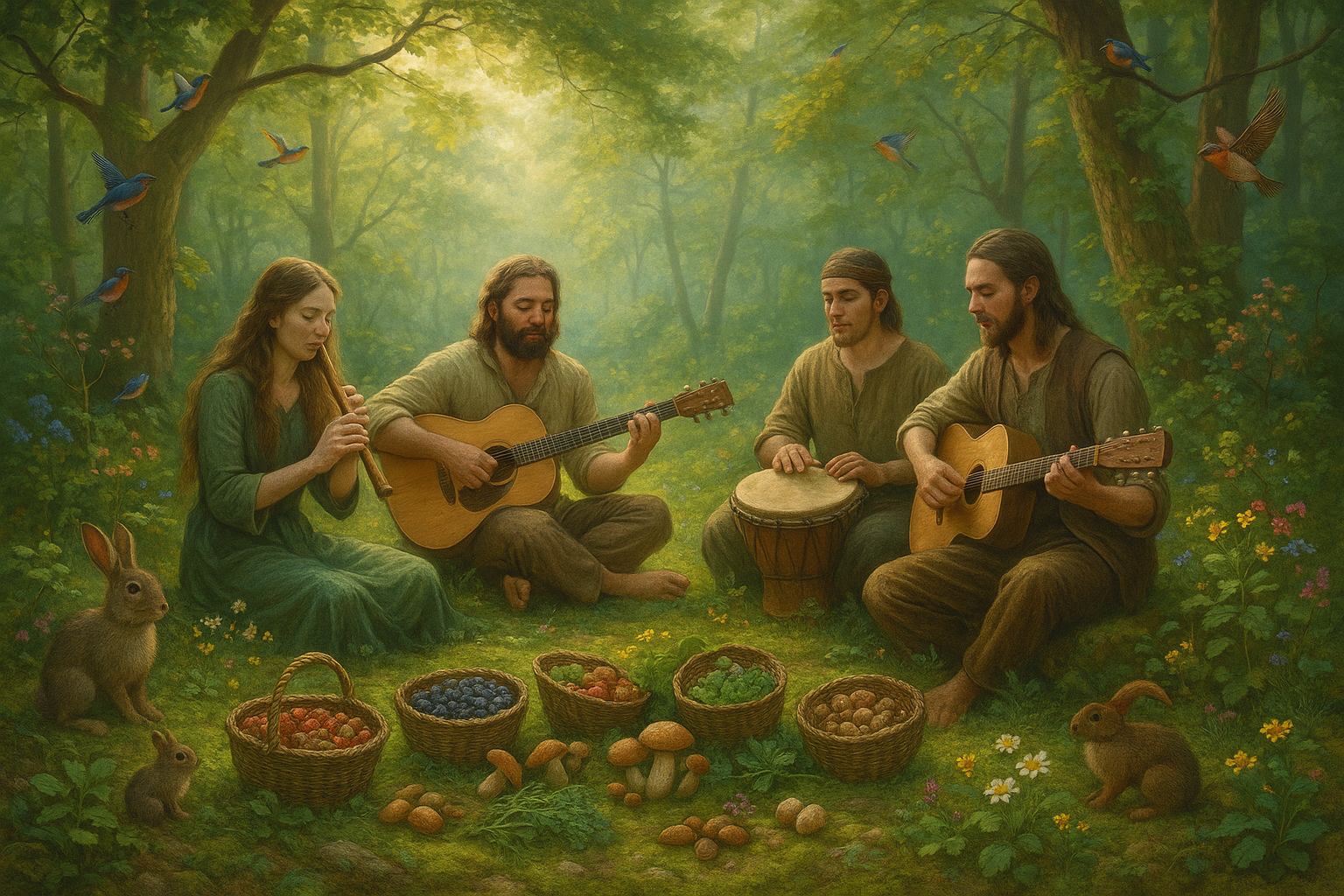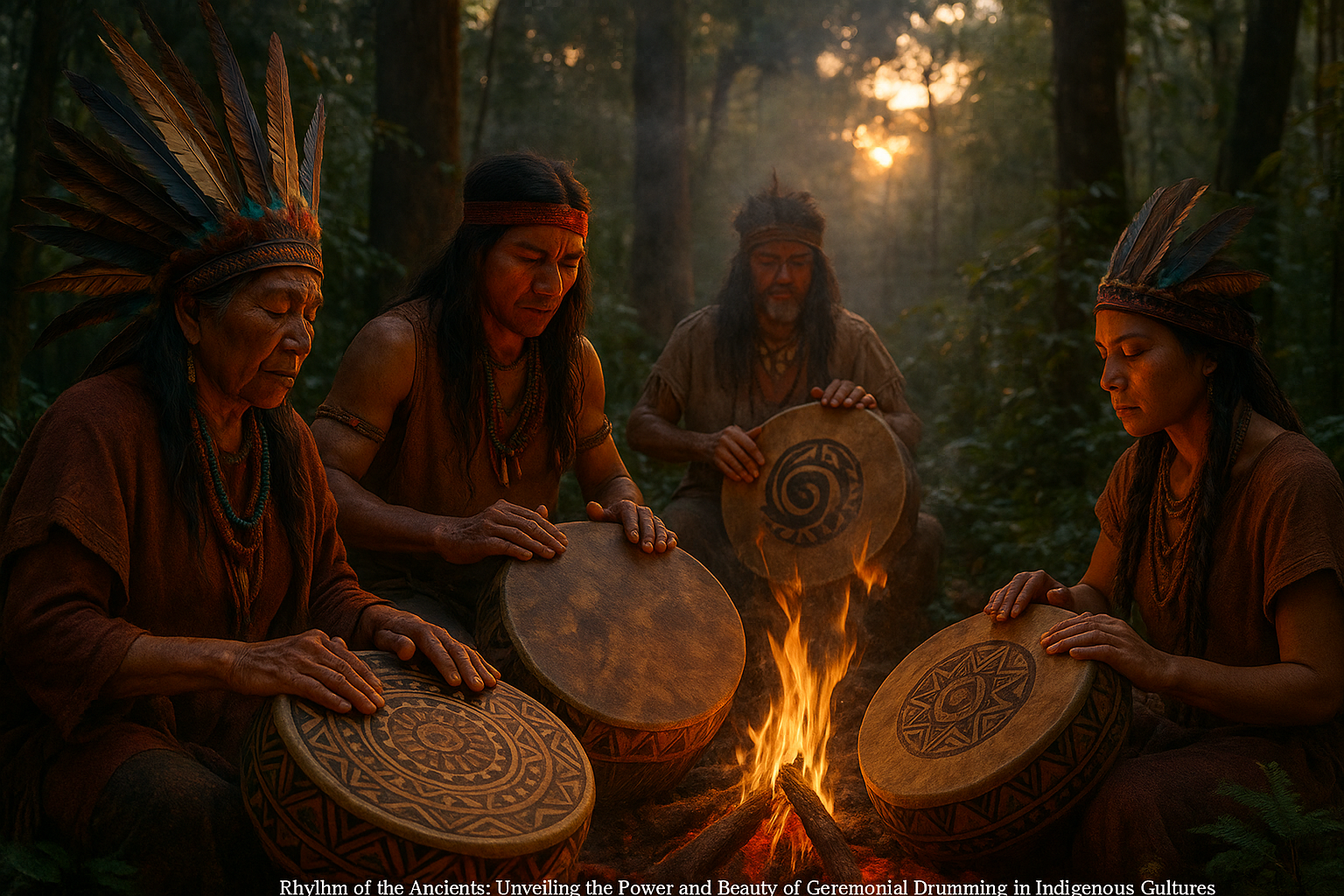In a world where creativity knows no bounds, the power of sound stands as a formidable force, shaping emotions, enhancing experiences, and breathing life into stories. From the gentle hum of a morning breeze to the intricate symphony of a bustling cityscape, sound enriches our world in ways both profound and subtle. But what if you could harness this power, molding and manipulating it to suit your creative vision? Enter the realm of open-source sonic libraries—a treasure trove of endless possibilities, waiting to be explored by intrepid creators like you. 🌟
Imagine having at your fingertips a vast collection of sounds, each one a brushstroke in your auditory masterpiece. These open-source libraries are not just repositories of audio files; they are gateways to innovation, inviting musicians, filmmakers, game developers, and content creators to push the boundaries of what is possible. Whether you’re a seasoned professional or a curious novice, these libraries offer a playground for experimentation and discovery, all without the constraints of traditional licensing fees. The democratization of sound has arrived, and it’s time to dive in.
In this article, we will journey through the fascinating world of open-source sonic libraries, unveiling the secrets to unleashing their full potential. We will explore how these libraries are reshaping the landscape of creative industries, offering tools and resources that empower users to craft unique soundscapes tailored to their specific needs. From the technical aspects of accessing and utilizing these libraries to the inspiring stories of creators who have transformed their work with open-source audio, our exploration will leave you equipped with the knowledge and inspiration to elevate your own projects.
But that’s not all—our deep dive will also cover the ethical and collaborative dimensions of the open-source movement, highlighting the vibrant communities that fuel these libraries with their passion and creativity. We will discuss how these communities thrive on collaboration and shared learning, providing a supportive network for creators worldwide. So, are you ready to unlock the power of sound and embark on a creative journey like no other? Let’s dive into the world of open-source sonic libraries and discover the endless possibilities that await. 🎶
The Fascinating World of Open-Source Sonic Libraries
In the dynamic realm of music production, sound design, and digital audio manipulation, open-source sonic libraries have emerged as a transformative force. These libraries are invaluable resources for creators, offering a treasure trove of sounds that can be utilized, modified, and shared freely. The open-source nature of these libraries encourages collaboration and innovation, fostering a community where creativity can flourish without the constraints of traditional licensing. As technology continues to evolve, the accessibility and diversity of open-source sonic libraries have made them an essential tool for musicians, sound designers, and hobbyists alike.
Open-source sonic libraries provide a vast array of sound samples, effects, and tools that can be integrated into various audio projects. These libraries encompass everything from orchestral samples and electronic beats to ambient soundscapes and field recordings. The flexibility offered by open-source licensing means that users can adapt and experiment with sounds without legal or financial hindrances. This freedom not only empowers individual creators but also cultivates a collaborative environment where ideas can be shared and expanded upon. As more artists and developers contribute to these libraries, the quality and variety of available resources continue to grow, ensuring that there is something for every project and taste.
The Benefits of Open-Source Sonic Libraries
Open-source sonic libraries offer numerous benefits beyond their cost-free nature. They promote a spirit of sharing and innovation, allowing creators to build upon existing work and contribute to a collective pool of knowledge. This collaborative approach not only accelerates the development of new techniques and technologies but also encourages transparency and accountability within the community. Additionally, open-source projects often have active forums and user groups, providing support and feedback to both new and experienced users.
Moreover, open-source libraries often boast a higher level of customization compared to their proprietary counterparts. Users have the freedom to tweak and adjust sounds to suit their specific needs, leading to more personalized and unique audio creations. This level of customization is particularly valuable in industries such as film and game production, where distinctive soundscapes can significantly enhance the overall experience. By empowering creators to tailor sounds to their visions, open-source libraries drive innovation and elevate the quality of audio content across various media platforms.
To illustrate the advantages of open-source sonic libraries, consider the following table that compares some popular open-source options:
| Library Name | Features | Platform Compatibility |
|---|---|---|
| Freesound | Extensive database of sound samples, collaborative community | Windows, macOS, Linux |
| Audacity | Audio editing, effects, plugins support | Windows, macOS, Linux |
| SuperCollider | Real-time audio synthesis, algorithmic composition | Windows, macOS, Linux |
Diving into Popular Open-Source Sonic Libraries
The world of open-source sonic libraries is vast, offering an impressive array of tools and resources for audio creators. Let’s explore some of the most renowned libraries that have become staples in the industry.
Freesound
Freesound is a collaborative database of Creative Commons licensed sounds. It provides a platform for users to upload, download, and share sound samples of various kinds, including field recordings, musical snippets, and sound effects. The community-driven nature of Freesound ensures a constantly expanding and diverse collection of sounds. Its user-friendly interface and robust search functionality make it easy to find the perfect sound for any project. By participating in Freesound, users not only gain access to a wealth of audio resources but also contribute to a global community of sound enthusiasts.
Audacity
Audacity is a powerful open-source audio editing software that is widely used by professionals and hobbyists alike. It offers a comprehensive suite of tools for recording, editing, and mixing audio tracks. Audacity supports a wide range of audio formats and provides users with an array of effects and plugins to enhance their audio projects. Its open-source nature means that it is constantly being improved by a dedicated community of developers, ensuring that it remains a cutting-edge tool for audio editing. Whether you’re looking to clean up a podcast recording or create complex soundscapes, Audacity provides the flexibility and functionality needed to bring your audio visions to life.
SuperCollider
SuperCollider is a platform for audio synthesis and algorithmic composition. It is particularly popular among electronic musicians and sound artists due to its ability to generate complex and evolving soundscapes. SuperCollider allows users to write code that controls audio synthesis in real-time, providing unparalleled flexibility and creative control. Its open-source nature encourages experimentation and innovation, leading to a vibrant community of users who share their techniques and compositions. For those interested in exploring the cutting edge of sound design, SuperCollider offers a unique and powerful toolset.
For more insight into how these libraries can be used creatively, check out this insightful video: Understanding the Power of Open-Source Sound Tools – [YouTube Channel Name]. 🎶
Leveraging Open-Source Sonic Libraries for Creative Projects
Utilizing open-source sonic libraries in creative projects offers endless possibilities for innovation and expression. Whether you’re a seasoned professional or a newcomer to the world of audio production, these libraries provide the tools necessary to push the boundaries of sound design. Here, we’ll explore some of the ways in which open-source sonic libraries can be integrated into various creative endeavors.
First, open-source libraries are a fantastic resource for musicians looking to expand their sonic palette. By incorporating unique samples and sounds, artists can create music that stands out in a crowded marketplace. These libraries offer an eclectic mix of instruments, ambient sounds, and effects, allowing musicians to explore new genres and styles with ease. Moreover, the customizable nature of open-source tools enables artists to craft truly personalized soundscapes, ensuring that their music resonates with authenticity and originality.
In the realm of film and video production, sound is a crucial element that can significantly enhance the storytelling experience. Open-source sonic libraries provide filmmakers with access to high-quality sound effects and ambient tracks that can elevate the emotional impact of a scene. Whether it’s the suspenseful creak of a door in a horror film or the soothing rustle of leaves in a nature documentary, these libraries offer the resources needed to create immersive audio environments. By leveraging open-source sound tools, filmmakers can produce professional-grade audio that captivates and engages audiences.
- Experiment with new genres by using diverse sound samples.
- Create immersive audio environments for films and video games.
- Collaborate with other artists and developers to innovate and expand your projects.
The integration of open-source sonic libraries into creative projects is not limited to music and film. Game developers, for instance, can use these libraries to design rich and interactive soundscapes that enhance player immersion. Sound is a powerful tool in gaming, capable of guiding players, setting moods, and providing auditory feedback. Open-source libraries offer game developers the flexibility to design unique and dynamic audio experiences that complement gameplay mechanics and narratives.
In summary, open-source sonic libraries are invaluable assets for anyone engaged in the creation and manipulation of sound. They provide the tools and resources needed to explore new creative horizons, collaborate with a global community, and produce high-quality audio content. By embracing these libraries, creators can unlock a world of sonic possibilities, limited only by their imagination.

Conclusion
Certainly! Here’s a conclusion crafted for your article:
—
In wrapping up our exploration of the fascinating world of open-source sonic libraries, it’s essential to revisit the transformative impact these resources have on creative expression and innovation. Throughout our journey, we’ve delved into the myriad ways these libraries have democratized access to high-quality sound resources, allowing musicians, sound designers, filmmakers, and content creators to transcend traditional boundaries and limitations.
We began by understanding the concept of open-source sonic libraries, emphasizing their role in providing freely accessible sound assets to creators worldwide. This access not only fosters creativity but also promotes a culture of sharing and collaboration. By leveraging platforms like Freesound and ccMixter, users can tap into a vast reservoir of sound clips, effects, and music tracks to enhance their projects. These platforms are living proof of how open-source initiatives can harness collective creativity for the greater good.
We also explored the technical aspects of using these libraries, discussing file formats, licensing agreements, and the best practices for integrating these resources into your work. Understanding these technicalities ensures that creators can use sounds ethically and legally, paving the way for sustainable creative practices.
Furthermore, we examined the significant impact of community-driven projects on the evolution of sonic libraries. The collaborative nature of these platforms fosters a continuous cycle of innovation, where users are both contributors and beneficiaries. This dynamic ecosystem not only enriches the available content but also inspires new generations of creators to experiment and push the boundaries of what’s possible in sound design.
The importance of open-source sonic libraries extends beyond individual projects; they have become crucial tools in educational settings, aiding in the development of new skills and knowledge among students and professionals alike. By incorporating these resources into curricula, educators can provide hands-on experiences that nurture creativity and technical proficiency.
To reinforce the importance of embracing open-source sonic libraries, consider the broader implications of accessible sound resources on cultural and artistic development. By lowering the barriers to entry, these libraries empower diverse voices and stories to be heard, contributing to a more inclusive and vibrant creative landscape. The ripple effect of this democratization can lead to more innovative, thought-provoking, and culturally significant works.
As you reflect on the insights gained from this discussion, we encourage you to actively engage with the world of open-source sonic libraries. Whether you’re a seasoned professional or an enthusiastic beginner, these resources offer endless possibilities for exploration and innovation. Experiment with different sounds, collaborate with fellow creators, and contribute to the ever-growing repository of auditory assets.
Moreover, sharing your experiences and creations can inspire others to join the movement, further enriching the community and fostering a cycle of creativity and collaboration. Don’t hesitate to leave your thoughts and comments below, or share this article with fellow creators who might benefit from these insights. By doing so, you contribute to a global dialogue on the power of sound and the potential of open-source initiatives to shape the future of creativity.
In closing, the power of sound is an incredible force, capable of evoking emotions, telling stories, and shaping experiences. By harnessing the potential of open-source sonic libraries, you unlock new dimensions of creativity and innovation, paving the way for a future where the possibilities are as limitless as the sounds that surround us. 🎶
Thank you for embarking on this sonic journey with us. We hope it has inspired you to explore, create, and share. Until next time, keep pushing the boundaries of what’s possible, and let the power of sound guide your creative endeavors.
—
Feel free to customize this conclusion further to better fit the overall tone and style of your article.
Toni Santos is a sensory storyteller and soundscape artisan whose work explores the forgotten language of the Earth through acoustic ecology storytelling. With a deep reverence for the natural world’s sonic textures, Toni crafts narratives that awaken our ears to the subtle music of forests, winds, waters, and wild silence.
His creative journey is rooted in a desire to preserve and interpret the acoustic heritage of environments, both ancient and fragile. From the echo of birdsong in a disappearing jungle to the resonance of stones in sacred landscapes, Toni’s stories reflect the memory held in sound—often overlooked, yet deeply felt.
With a background in environmental aesthetics and sonic design, Toni blends field recordings, visual symbolism, and poetic insight to create immersive experiences that honor the sonic soul of nature. His work does more than document; it invites listeners to re-tune themselves to the rhythms of life that still pulse beneath modern noise.
As the voice behind Vizovex, Toni shares sound-based studies, ambient narratives, and reflective content that help others reconnect with how sound shapes memory, meaning, and place.
His work is a tribute to:
The lost soundscapes of vanishing ecosystems
The role of natural acoustics in cultural and emotional memory
The healing potential of listening deeply to the world
Whether you’re an artist, an ecologist, or someone drawn to the quiet power of listening, Toni invites you into a space where every rustle, ripple, and resonance becomes a story—one note, one place, one heartbeat at a time.





